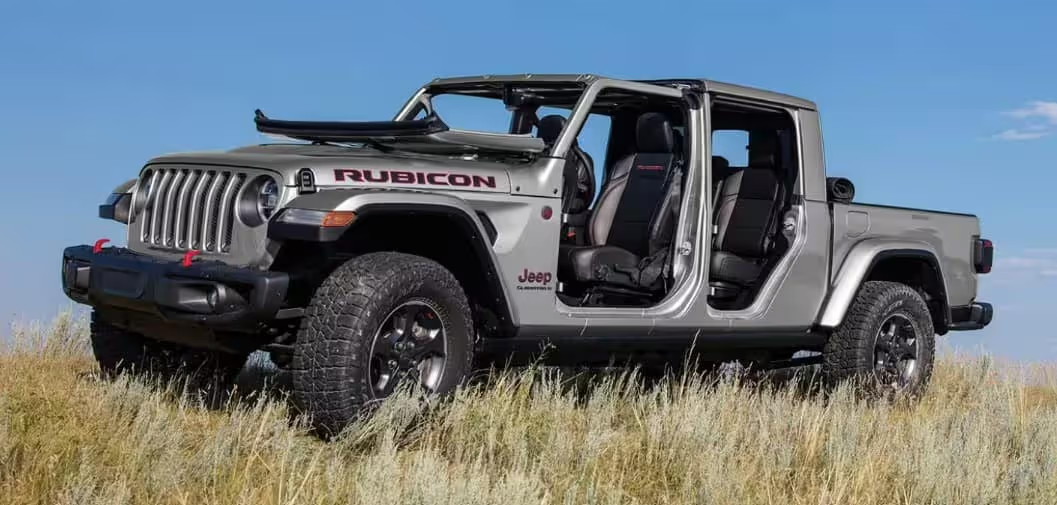No matter how many off-road upgrades your truck is equipped with, sometimes you still end up getting stuck. In those moments, having a winch can be incredibly useful.
These compact electric motors are capable of delivering impressive pulling strength. However, if you’re planning to install one on your truck, it’s important to ensure that your bumper is capable of handling the load.
If not, you could end up tearing it off and causing damage to your vehicle. While the aftermarket offers a wide variety of solutions, there are also five trucks you can buy directly from the manufacturer or dealership that come with a winch-ready bumper.
Ram 2500 Power Wagon
The original Power Wagon holds the distinction of being the first pickup truck equipped with four-wheel drive.
The current Ram 2500 Power Wagon carries on that legacy as a heavy-duty off-roader that lives up to its historic name.
Starting at a base price of $53,690, this truck doesn’t just come with a winch-ready bumper it includes a fully-integrated 12,000-lb Warn winch.
Beyond the winch, the Power Wagon is loaded with excellent off-road equipment. Both front and rear axles feature locking differentials, and the sway bar can be electronically disconnected.
The vehicle is powered by a single engine choice: a 6.4-liter Hemi V8 delivering 410 horsepower and 429 lb-ft of torque.
So even if the Power Wagon manages to avoid getting stuck, it’s more than capable of pulling others out of tough situations.
If the Ram Rebel 1500 OTG concept is any indication, the winch feature may eventually become available on lighter-duty Ram trucks as well.
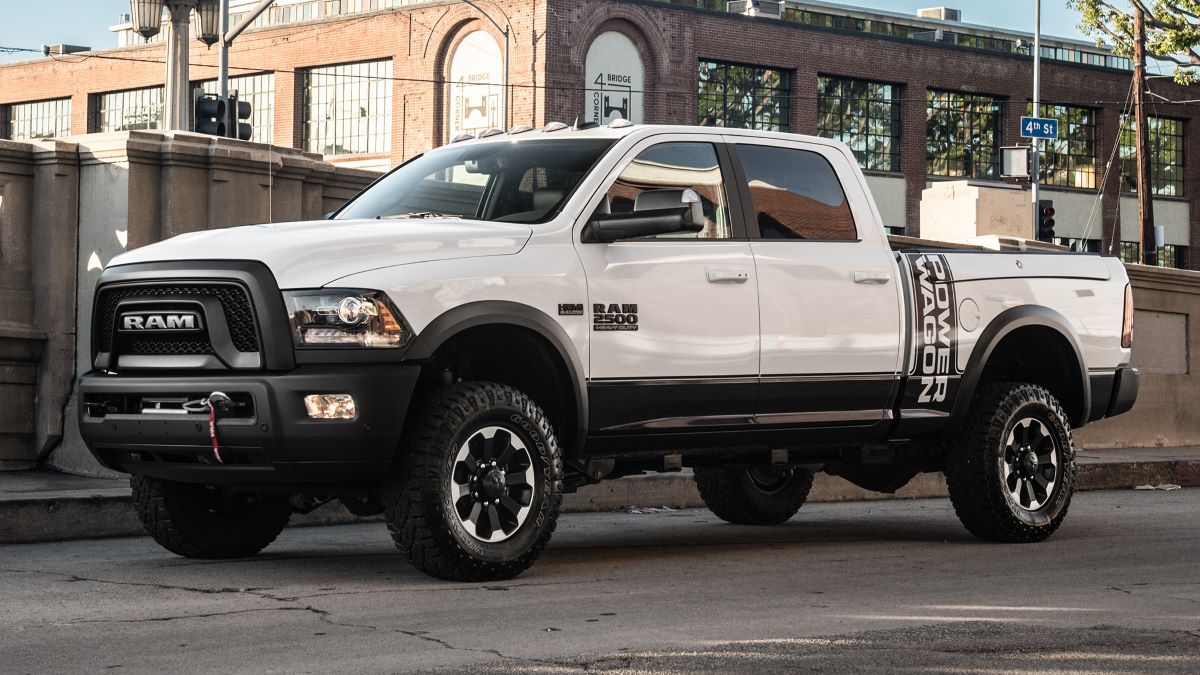
Heavy-duty trucks such as the Ram 2500 deliver the kind of strength required for a wide range of demanding tasks. With tow and payload capacities that rank among the best in the segment, these trucks are built for serious work. In addition, certain heavy-duty models include trims designed specifically for off-road performance.
The Power Wagon is the Ram 2500’s off-road-oriented variant, engineered to tackle rugged terrain without breaking a sweat. It is available exclusively with a crew cab layout that accommodates either five or six passengers, and all Power Wagons are equipped with a 6-foot-4-inch cargo bed.
This trim includes features tailored for off-road success. An electronic locking differential ensures both wheels on an axle rotate at the same speed, which significantly improves traction in muddy, snowy, or loose soil conditions.
The Power Wagon includes these electronic locking differentials on both the front and rear axles as standard equipment, enabling it to maintain forward momentum even in the most punishing environments. Additionally, it comes standard with four-wheel drive, boosting grip on uneven or slippery surfaces.
When navigating off-road, it’s crucial for each wheel to move independently to adapt better to unpredictable terrain. This flexibility is controlled by the sway bar.
Disconnecting the sway bar increases wheel articulation, improving trail capability. The Power Wagon includes an electronic front sway bar disconnect system that can be activated when more wheel travel is needed.
Seventeen-inch matte-black aluminum wheels help the truck stay firmly planted, and they’re wrapped in 33-inch all-terrain tires built to endure harsh conditions like canyon trails and rocky paths.
Powering the truck is a standard 6.4-liter Hemi V8, delivering the force necessary to conquer inclines and ford water crossings.
This engine generates 410 horsepower and 429 pound-feet of torque, paired with an eight-speed automatic transmission. When the trail ends and it’s time to tow, this V8 rises to the occasion. With the standard Hemi, the Power Wagon can tow up to 17,540 pounds.
AEV Prospector
While the Power Wagon is a complete factory trim, it’s limited to the crew cab with a 6’4” bed. However, there’s another way to equip even a base Ram 2500 Tradesman with a winch.
American Expedition Vehicles (AEV), a well-known off-road vehicle modifier, can transform any Ram 2500 into one of three Prospector variants: the standard model, XL, and XL Tray Bed.
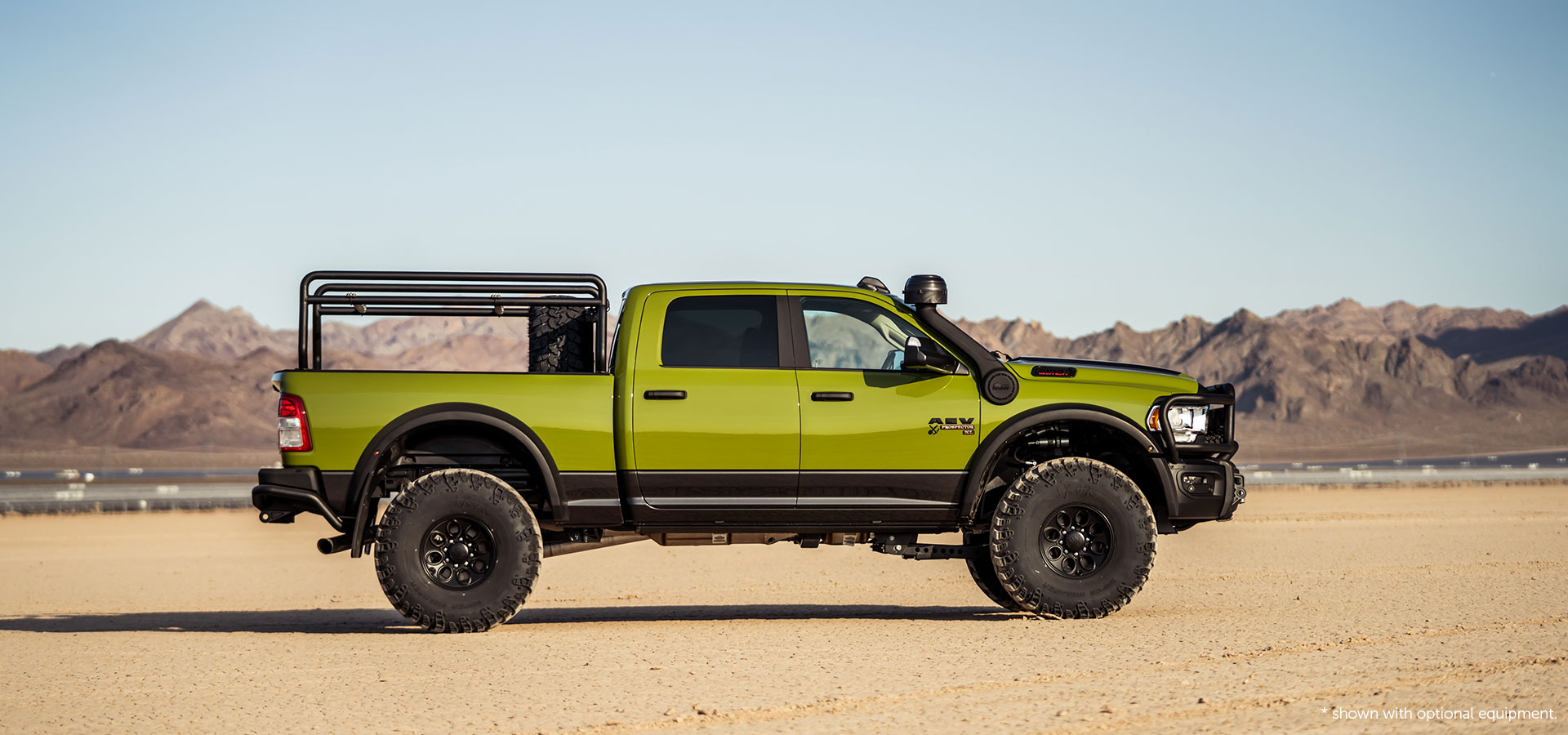
Unlike the Power Wagon, the Prospector lineup even allows diesel Ram 2500s to be modified. A winch-ready steel bumper comes included with the $12,940 base Prospector package.
In addition, the package includes 3” DualSport SC suspension, a heat-reduction hood, and 37” BFGoodrich K02 all-terrain tires.
The bumper is also available separately for $2,330, not including installation or optional winches, and it is fully compatible with the Ram 2500’s front parking sensors.
AEV Recruit
AEV didn’t want to limit off-road performance upgrades to only heavy-duty trucks, which is why it introduced the Recruit, based on the Ram 1500.
This equipment package includes a 4” DualSport suspension system, a front skid plate, and a 4mm-thick steel bumper that’s winch-ready. This bumper can support a winch with a pulling capacity of up to 10,000 pounds.
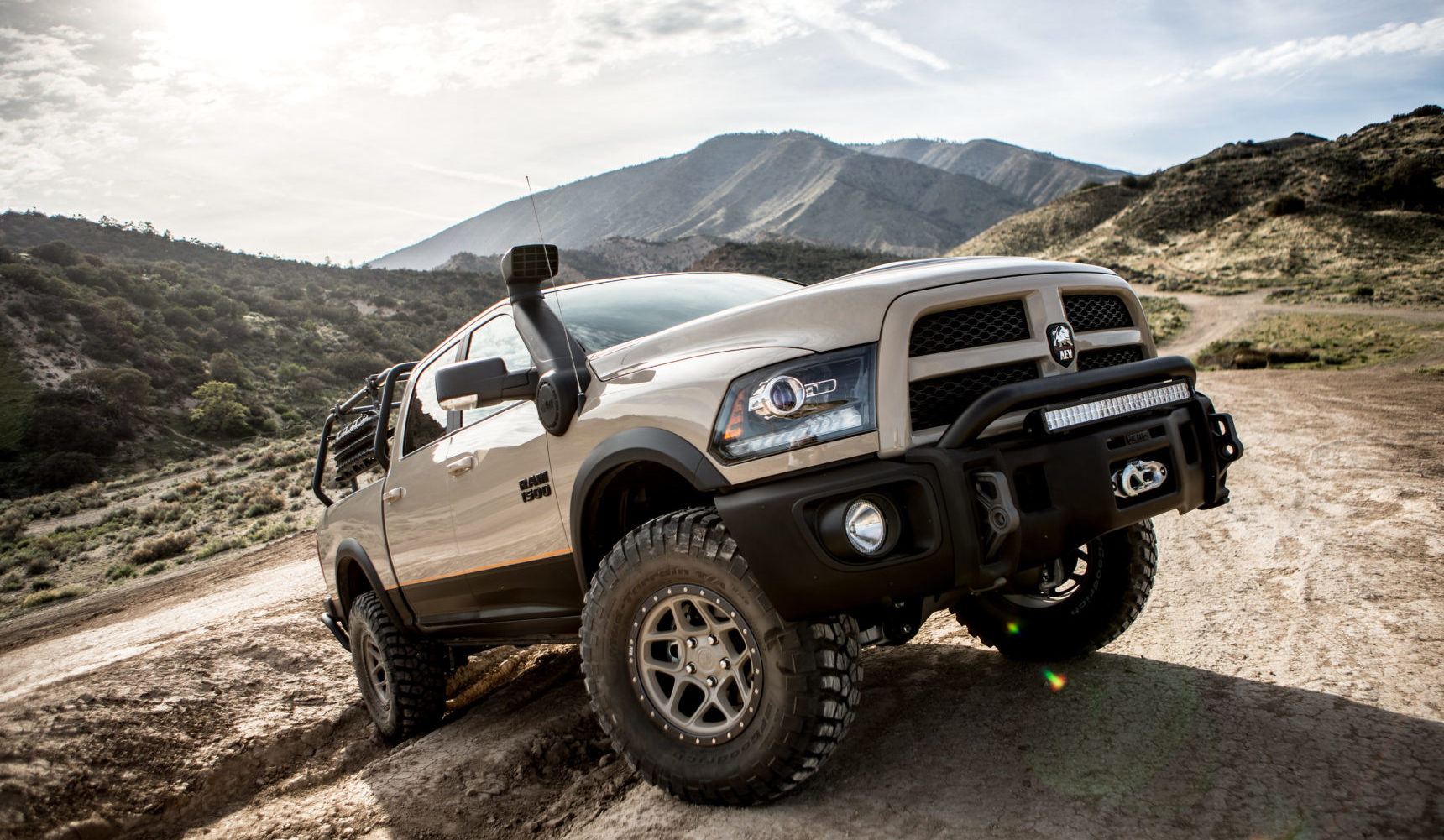
Like the Prospector, the Recruit’s upgrades can be purchased either as a complete package or as individual components. For owners of 2013–2017 Ram 1500 trucks, the full package is priced at $14,950.
The bumper alone costs $2,115, excluding installation and winch costs, and it also works seamlessly with the truck’s front parking sensors.
Chevrolet Colorado ZR2 Bison
The Chevrolet Colorado ZR2 already comes equipped from the factory as a capable off-roader, featuring a 2” lift kit, Multimatic dampers, and locking electronic differentials at both the front and rear.
But for those seeking enhanced off-road durability, Chevrolet teamed up with AEV to create the ZR2 Bison.
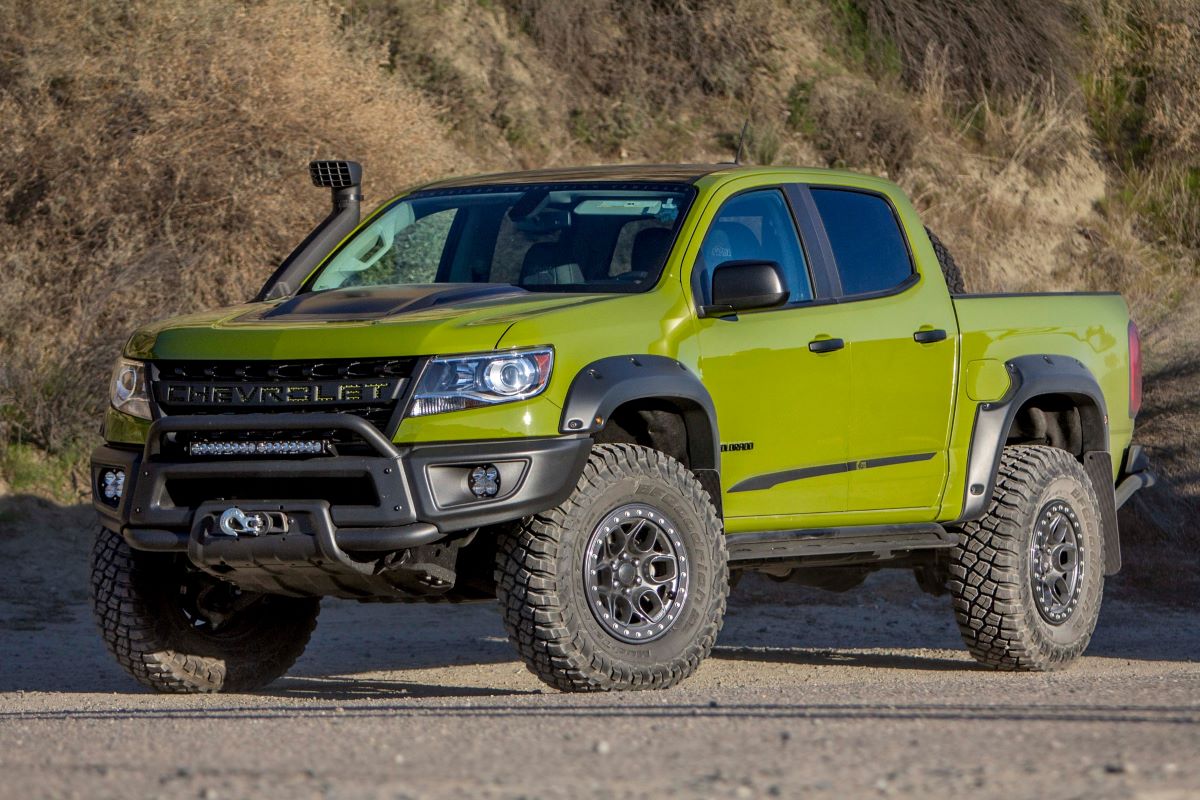
In addition to 31” all-terrain tires and Boron steel skid plates, AEV added steel front and rear bumpers. The front bumper is winch-ready, and a winch can be added as an optional upgrade.
However, these enhancements come at a premium. The Bison package costs an additional $5,750 on top of the base ZR2’s $44,095 MSRP.
Installing a winch requires both the winch and a special install kit, totaling an extra $1,445.
Also Read: 5 Base Trims That Sell Better Than Top Trims And 5 That Don’t
Jeep Gladiator
Jeep’s Trail-Rated™ badge might be seen by some as marketing, but the Gladiator pickup truly lives up to its off-road reputation.
It’s one of the rare mid-size trucks that can handle rock-crawling straight from the factory.
Even the base Sport trim is capable of taking on the Rubicon Trail, though the Rubicon trim with its Fox shocks and locking front and rear differentials makes the job easier.
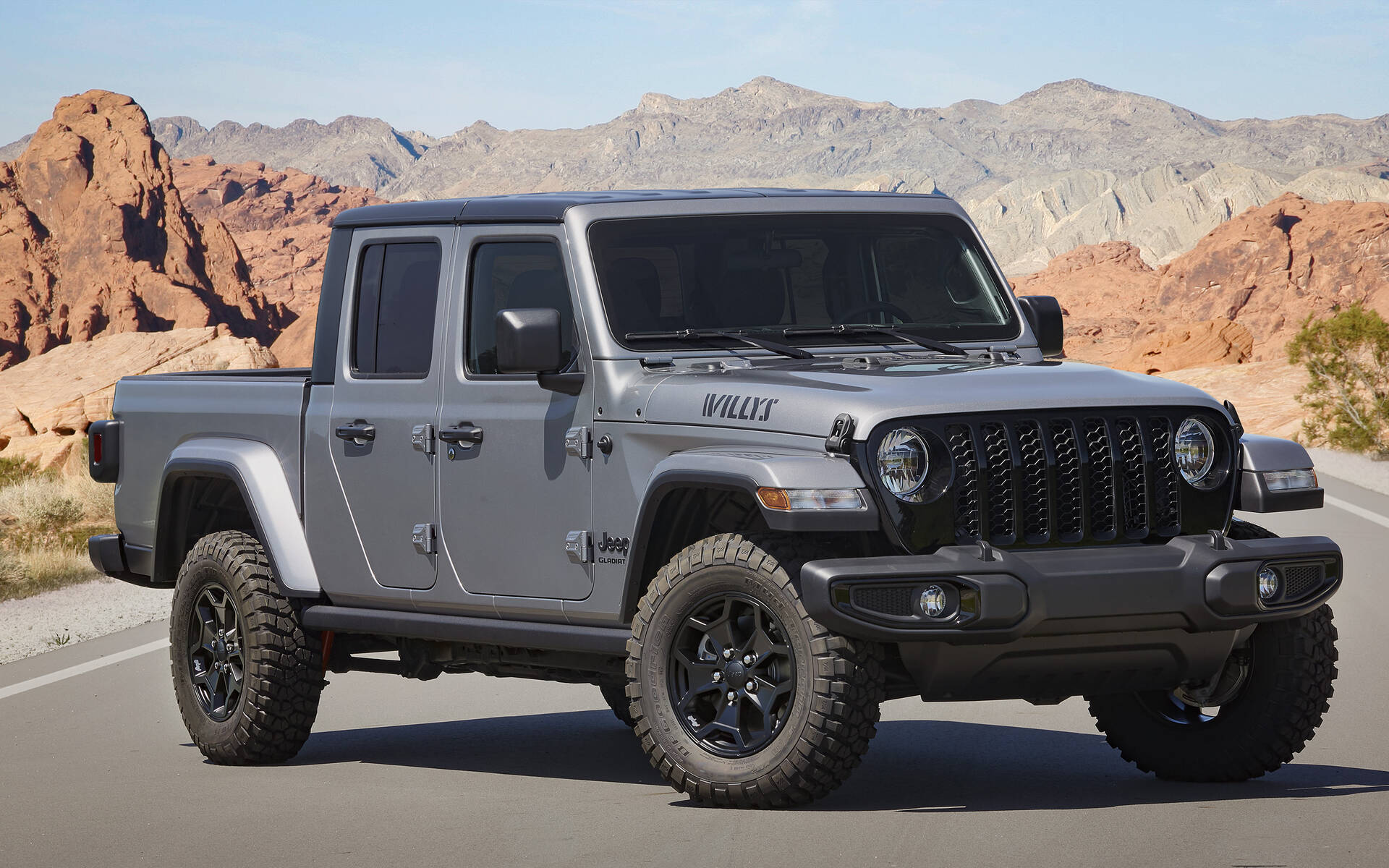
Much like the Wrangler on which it is based, the Gladiator is exceptionally modification-friendly. The extensive list of factory accessories makes it feel like a Lego kit for adults.
Unfortunately, only the Gladiator Rubicon trim offers a factory winch-ready bumper. This steel bumper is priced at $695, in addition to the Rubicon’s $43,545 MSRP. A few years ago, Jeep took note of the growing demand for pickup trucks in the U.S. market.
To capitalize on this trend, it applied the proven Wrangler platform to a truck design, resulting in a mid-size pickup that combines the Wrangler’s off-road prowess with the added utility of a five-foot cargo bed. The result was the Jeep Gladiator—a model that’s found strong success, selling nearly 78,000 units last year.
This is particularly noteworthy given its starting price of around $40,000, which positions the 2024 Jeep Gladiator several thousand dollars above competitors like the Chevrolet Colorado and the all-new Toyota Tacoma.
Among its variants is the Mojave, a high-speed off-road trim with FOX suspension. However, unlike the Ford Ranger Raptor, it doesn’t fall into the performance category, since it runs the same 285-horsepower naturally aspirated V6 found in all Gladiators.
A hybrid 4xe powertrain is expected in the future, but the diesel option has been discontinued. As a result, the Gladiator offers less powertrain variety and falls short in fuel economy.
Nonetheless, it boasts solid towing capability and has gained refinement through improved sound insulation and enhanced standard features, including a modernized infotainment system.
The question remains: can it now compete more directly with its more road-friendly rivals? The 2024 Gladiator introduces a major reshuffling of trims and numerous updates to its specifications and features.
Several limited-run trims—Freedom, Texas Trail, Willys Sport, Overland, High Altitude, and Rubicon FarOut—have been retired. In their place, Jeep has added two new trims: Rubicon X and Mojave X. These come equipped with a full-time transfer case, steel bumpers, an off-road camera, and upscale Nappa leather upholstery.
The 3.0-liter turbo-diesel engine offered last year is no longer available, leaving the naturally aspirated 3.6-liter V6 gas engine as the sole option. Exterior updates include a redesigned seven-slot grille that enhances cooling performance, a relocated radio antenna now integrated into the windshield, and updated wheel designs.
Structural enhancements have been made for improved side-impact resistance, now accompanied by standard side curtain airbags across all trims. Additionally, Sport S trims and above now include adaptive cruise control, forward collision warning, and automatic emergency braking as standard.
Inside the cabin, the Gladiator benefits from a revamped infotainment system, featuring a new 12.3-inch touchscreen standard across the lineup.
This updated system introduces several enhancements, including support for two simultaneous phone connections, a customizable home screen, better voice recognition, and navigation with Jeep Adventure Guides via Trails Off-Road. Standard equipment has also been upgraded—the Sport now includes a premium soft top, while the Willys trim gains Off-Road+ mode and a Tru-Lok rear-axle locker.
Refinement has been further improved through added sound insulation throughout the vehicle. For 2024, a new exterior paint color called Anvil is also available.
Pickups Lacking Tow Hooks
The pickup truck has long been considered humanity’s dependable workhorse. Its origins can be traced back to 1917, when Henry Ford launched a pickup version of the classic Model T.
Recognizing that farmers were already modifying the standard Model T to better suit their demanding needs, Henry decided to offer a factory-made alternative built specifically for hard labor just like the people who relied on them.
As time went on, the pickup truck developed beyond its basic hauling purpose, with off-road capabilities eventually becoming a defining feature of the category.
A true workhorse must be versatile and able to handle tough terrains where most other vehicles wouldn’t dare to venture.
However, not all pickup trucks are created equal. Some have deviated significantly from the traditional concept, favoring luxury, performance, or smooth on-road handling at the expense of off-road performance.
Striking a balance between these modern features and authentic off-road functionality is often difficult, and many trucks fall short of satisfying serious off-road enthusiasts.
That’s why it’s important to steer clear of certain models they were simply not designed for conquering sand dunes or powering through deep mud.
These pickup trucks certainly have their own appeal and excel in various areas, but off-roading is definitely not their strength.
Taking any of these vehicles into rougher terrain than basic trails is almost certain to lead to disappointment.
Hummer H2 SUT
Average Used Price: $21,575
The Hummer H2 SUT may appear tough and capable on the outside, but it disappoints in nearly every aspect that matters for off-roading.
Despite being marketed as the successor to the legendary H1, the H2 SUT only carries on the name, not the off-road prowess.
While it does feature a 4×4 drivetrain, an electronically-locking central differential, and low-range gearing, its excessive weight and poor break-over angle severely limit its off-road performance.
The specs include a 6.0 to 6.2-liter V8 engine paired with a 4-speed automatic transmission, delivering 329 to 398 horsepower and 364 to 415 lb-ft of torque.
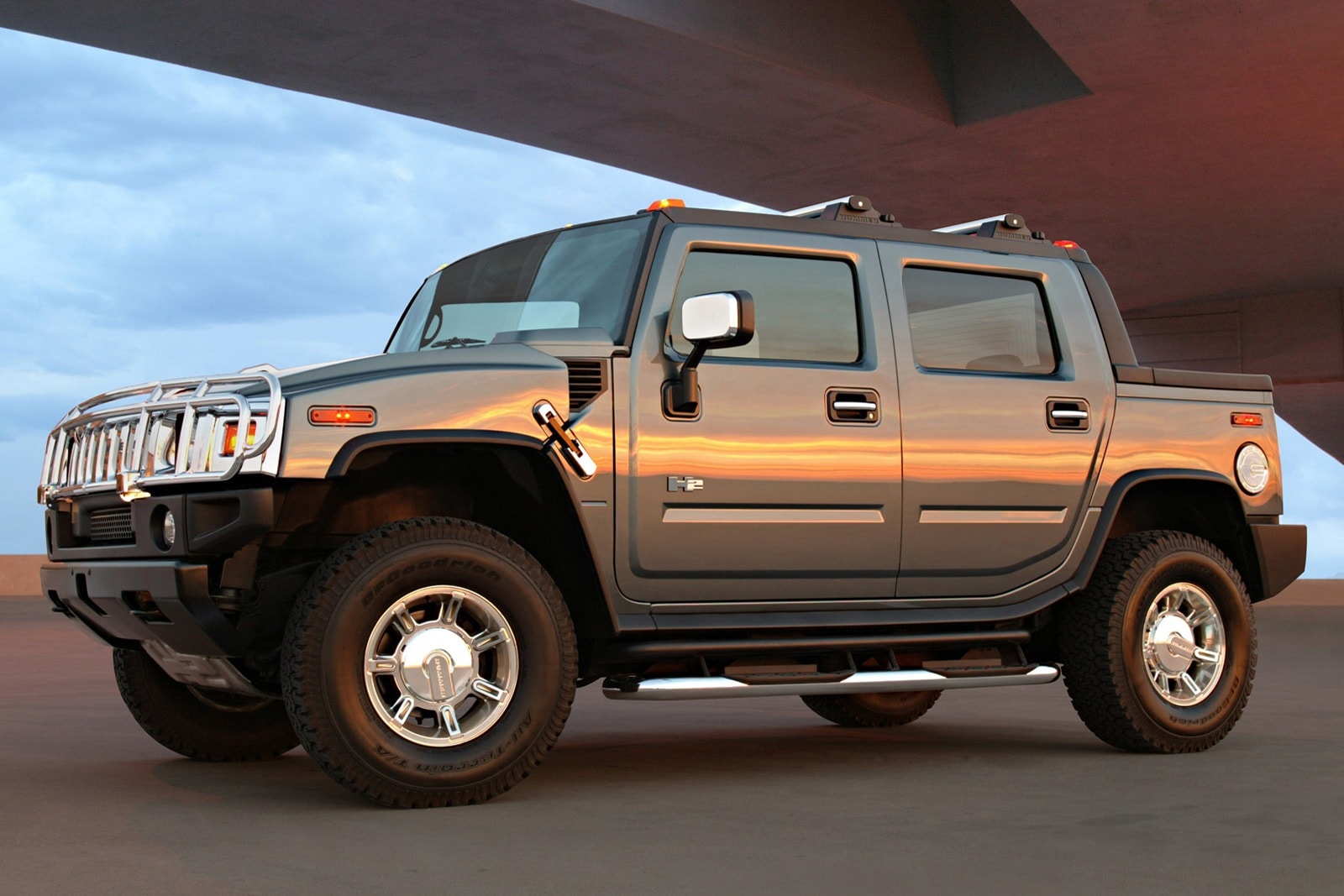
Its 0 to 60 mph time ranges from 9.6 to 9.9 seconds, with approach, breakover, and departure angles at 41.7, 25.8, and 40 degrees, respectively.
It offers a 2,200-pound payload and a 6,700-pound towing capacity. However, the truck bed is extremely small and impractical, making it more of a fashion statement than a functional off-road vehicle.
As with the regular H2, the SUT version seems built more for image than utility. “If you want to spare yourself the shame of being seen in one of these, you best go for the H1 or an entirely different model.”
GMC Syclone
Average Used Price: $18,500
Though it may be based on the humble GMC Sonoma, the GMC Syclone was once the fastest American production vehicle in terms of acceleration.
Capable of going from 0 to 60 mph in just 4.3 seconds, it outpaced even the 1992 Porsche 911, which took 5.5 seconds.
However, despite its powerful 4.3-liter turbocharged V6 engine and 280 horsepower (factory-rated), this pickup was never intended for off-road use.
The aggressive body kit significantly lowers ground clearance, making it unsuitable for rough terrain.
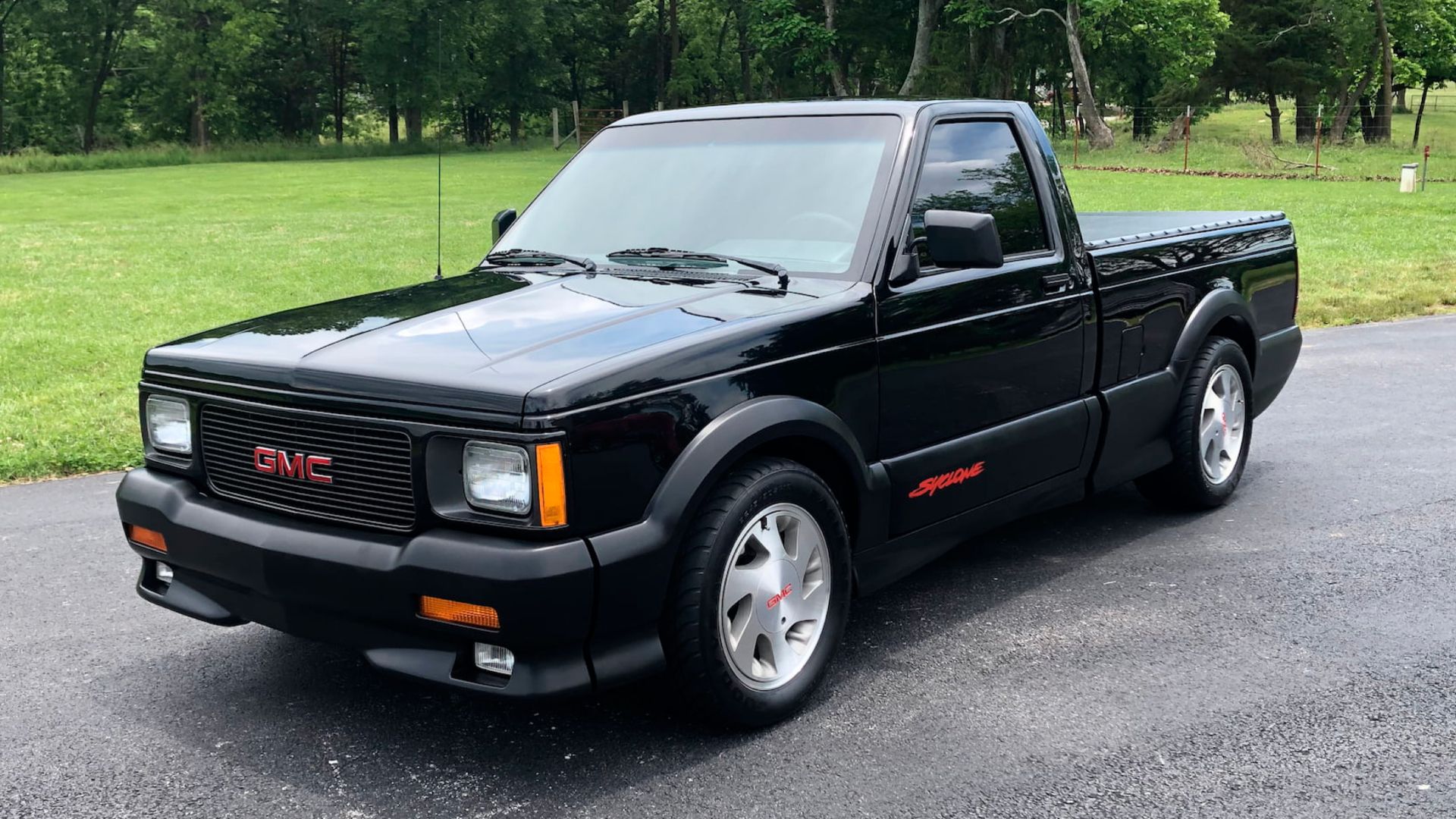
With 350 lb-ft of torque and a 4-speed automatic transmission, it maintains all-wheel drive something absent in rival sport trucks like the Ford Lightning and RAM SRT-10.
The Syclone has a payload capacity of just 500 lbs and a towing capacity of 2,000 lbs. Factory power numbers were modest; dyno tests often revealed at least 100 more horsepower, which explains its dominance over many sports cars of its time.
While it remains a quick and capable street performer, its low clearance and limited utility make it a poor choice for off-road adventures.
Now that the EV era is in full swing, 0-60 mph times under five seconds are no longer headline news. But back in the day, that kind of performance—especially from a pickup truck—was astonishing.
The GMC Syclone, which debuted in 1991, was a standout in a growing field of performance trucks. It shocked the automotive world by proving that a compact pickup could not only hang with, but often beat, some of the most celebrated supercars of its era.
While several performance trucks came and went, few captured attention like the Syclone. It wasn’t just fast for a truck—it was fast, period. The truck’s legacy lives on as one of the most iconic and unexpected performance machines of its time.
The Syclone’s most jaw-dropping stat was its 0-60 mph time of just 4.3 seconds. Even by today’s standards, that’s impressive—but back in the early ’90s, it was mind-blowing.
This rapid acceleration helped the truck complete the quarter-mile in 13.4 seconds, with a top speed of 124 mph. GMC wasn’t shy about promoting its capabilities, making bold claims such as “fastest accelerating vehicle” and “fastest production pickup truck.”
These weren’t empty boasts—the Syclone held its own against performance benchmarks of the era. The Porsche 911 Turbo, for instance, reached 60 mph in 4.4 seconds, while the Chevrolet Corvette ZR-1 took 4.9 seconds.
Videos from the time—even those still circulating on YouTube—show the Syclone effortlessly keeping pace with or outperforming high-end sports cars like Porsches and Ferraris, further cementing its legendary status.
At the heart of the Syclone’s performance was a turbocharged 4.3-liter V-6 engine. This powerplant delivered 280 horsepower at 4,400 rpm and 350 pound-feet of torque at 3,600 rpm.
The turbocharger was a Mitsubishi TD06-17C, providing the forced induction necessary to launch this truck into performance territory. Interestingly, a naturally aspirated version of this engine was used in the GMC Sonoma—the base model from which the Syclone was derived.
Power was routed through a 4L60 four-speed automatic transmission and a BorgWarner all-wheel-drive system, distributing 65 percent of torque to the rear wheels and 35 percent to the front. There was even a moment in development when the Syclone nearly received the Buick Grand National’s engine.
While that plan never came to fruition, a version of that engine did make its way into the Chevrolet S-10, the Sonoma’s twin. Additionally, the Syclone had a performance SUV sibling called the Typhoon, which shared its powertrain and much of its mechanical DNA.
The GMC Syclone’s specifications are still impressive by today’s standards: a 4.3-liter turbocharged and intercooled V-6 engine, 280 horsepower, 350 pound-feet of torque, 0-60 mph in 4.3 seconds, a 4L60 four-speed automatic transmission, and BorgWarner all-wheel drive.
It completed the quarter-mile in 13.4 seconds. In a time before EVs redefined acceleration, the Syclone stood as a shock to the system—a truck that could outgun sports cars and make performance purists take notice.
Subaru Baja
Average Used Price: $13,145
The Subaru Baja stands as one of the most unusual pickup designs in recent memory.
Borrowing heavily from the Subaru Outback, which itself is based on the Legacy station wagon, the Baja offered a “quad-cab” pickup layout with permanent all-wheel drive and the option for turbocharged boxer engines.
It was designed to evoke the rugged spirit of off-road rally trucks like those found in the Baja 1000. Still, it never caught on in North America.
With a 2.5-liter turbocharged flat-four engine, the Baja produced 210 horsepower and 235 lb-ft of torque. It came with either a 4-speed automatic or 5-speed manual transmission and reached 60 mph in about 7.3 seconds.
However, its off-road capabilities were quite limited. While it featured a central locking differential, there were no low-range gears, and its approach and departure angles 18 and 19 degrees respectively were poor.
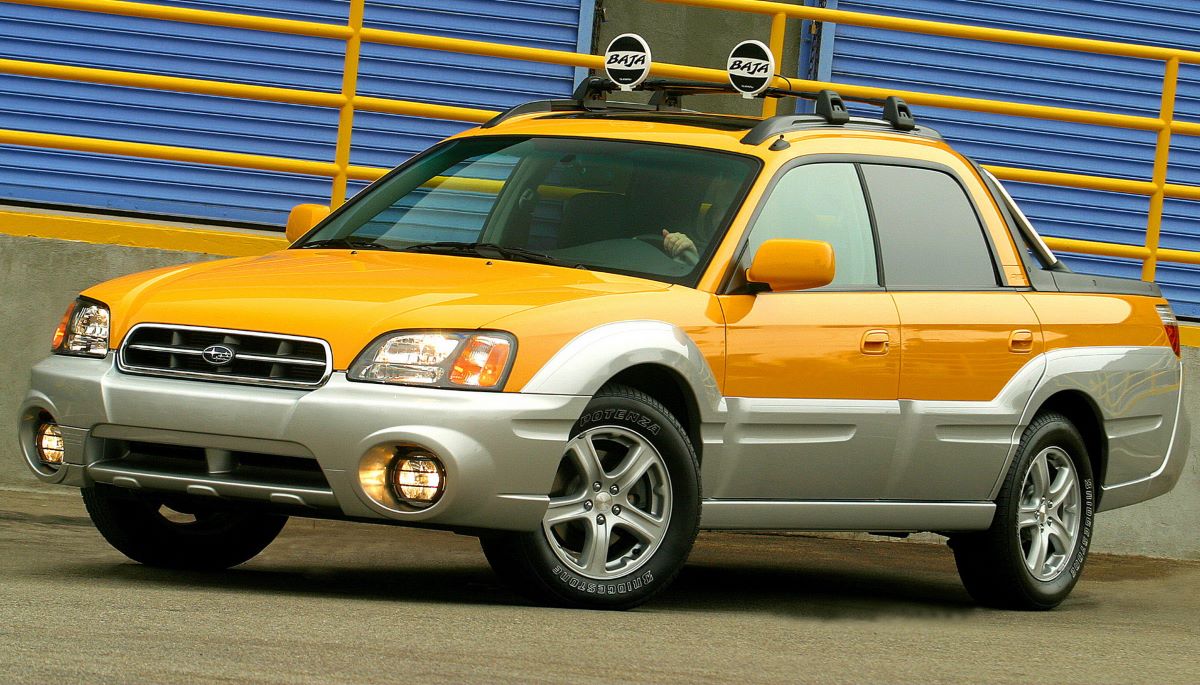
The truck’s underpinnings, derived from a light passenger vehicle, mean it’s better suited for mild trails than serious off-roading.
Its 1,005-pound payload and 2,400-pound towing capacity are modest, further highlighting its role as a quirky crossover rather than a functional off-road pickup.
Lincoln Blackwood
Average Used Price: $12,435
The Lincoln Blackwood was Ford’s bold attempt to merge luxury sedan comfort with pickup truck utility. Unfortunately, this experiment resulted in one of Lincoln’s biggest commercial failures.
Using the F-150’s crew cab design and combining it with the front end of the Lincoln Navigator, the Blackwood also featured a plush, heavily carpeted interior accented by chrome, faux wood, and LED lighting.
Marketed as “the ultimate utility vehicle,” it aimed to deliver luxury and practicality in one package.
Under the hood was a 5.4-liter V8 producing 300 horsepower and 355 lb-ft of torque, paired with a 4-speed automatic transmission.
Its 0 to 60 mph time was a respectable 6.4 seconds. However, the Blackwood only came with rear-wheel drive and offered poor ground clearance, contributing to a weak break-over angle despite a 138.5-inch wheelbase.
Approach, breakover, and departure angles stood at 22.8, 20, and 20.7 degrees, respectively. The truck had a payload capacity of 1,200 pounds and could tow up to 8,700 pounds. Despite these decent specs on paper, its lack of all-wheel drive made it a road-only vehicle.
Later, GM would attempt a more successful luxury SUT with the Escalade EXT, though it too wasn’t suited for the trails. “Driving it off-road meant risking damaging the posh chrome.”
The 21st century began on a challenging note for Lincoln. In just the first two years of the 2000s, the once-dominant American luxury brand experienced a nearly 25 percent drop in sales. In dire need of a bold and attention-grabbing move to reinvigorate the brand and stop the decline, Lincoln looked to expand its footprint beyond the familiar.
The full-size Navigator SUV had been a steady performer since its launch in the late 1990s, selling around 35,000 units annually. Building on this success, Lincoln ventured into nearby segments of the truck and SUV market.
True to its longstanding approach—taking Ford platforms, dressing them in chrome and leather, softening the ride, and adding its signature star emblem—Lincoln introduced two new vehicles in 2002. One was the Aviator, based on the Ford Explorer, and the other was a luxury pickup called the Lincoln Blackwood, derived from the Ford F-150 SuperCrew.
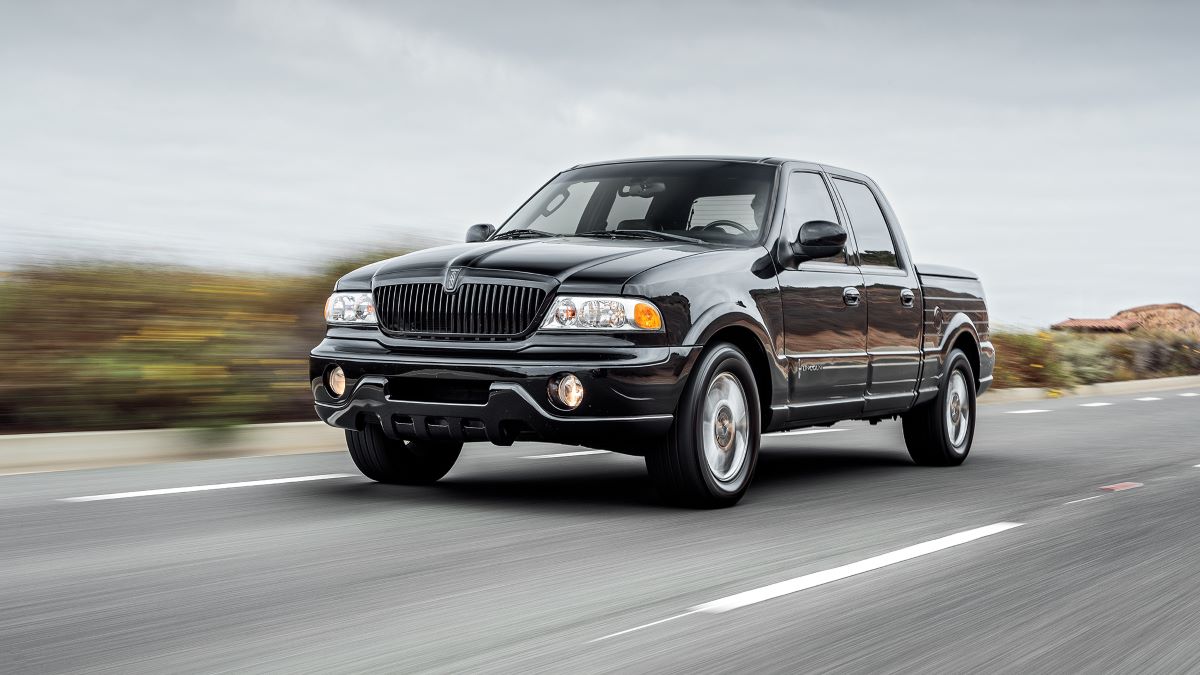
The underlying idea was fairly logical. Large, body-on-frame vehicles were steadily shedding their purely utilitarian roles and veering toward luxury.
By the early 2000s, models like the Land Rover Range Rover and Cadillac Escalade had demonstrated America’s appetite for premium SUVs, while the GMC Sierra Denali and Ford F-150 King Ranch showed that a market also existed for upscale pickups priced in the mid-five-figure range.
The Blackwood took this evolution a step further. Its interior was entirely black and decked out with high-end touches: four Connolly leather bucket seats, wide center consoles in both rows, elegant oak trim, a sunroof, and an optional GPS-based navigation system. In keeping with the black-on-black theme, the exterior was offered only in black.
Its pickup bed, however, featured faux black wenge wood grain on composite panels, accented with aluminum pinstripes—a detail that set it apart visually.
But it was in the cargo bed where the Blackwood made its most distinctive statement. Unlike traditional pickups with exposed beds, the Blackwood’s cargo space was permanently sealed under a hydraulic power-operated hard tonneau cover.
Instead of a standard drop-down tailgate, it featured Dutch-style barn doors that opened from the center. Inside, the bed was anything but utilitarian.
It was fully carpeted, illuminated with LED lighting, and lined with polished aluminum panels—clearly signaling that this was not a space intended for hauling anything rough, dirty, or practical.
Subaru BRAT
Average Used Price: $10,200
The Subaru BRAT is perhaps the quirkiest vehicle to emerge from the brand’s storied rally heritage.
Based on the Subaru Leone, which played a key role in Subaru’s rallying success, the BRAT was a compact pickup produced in two generations.
Its standout feature was the set of rear-facing jump seats mounted in the truck bed a unique addition that defined its character.
Despite its all-wheel drive setup, the BRAT lacked any serious off-road capability. Engine options ranged from a 1.6 to 1.8-liter flat-four, including a turbocharged variant, producing between 67 and 94 horsepower and up to 110 lb-ft of torque.
Paired with either a 3-speed automatic or a 4-speed manual transmission, the turbo model managed a 0 to 60 mph time of 14.3 seconds.
Base versions were front-wheel drive, and the ground clearance was no better than the Leone it was based on.
On the positive side, the BRAT was extremely lightweight, weighing just 1,709 pounds in its first generation and 2,205 pounds in the second.
This made it nimble and quick over certain terrain, but its low weight also meant it lacked the traction necessary for proper off-roading.
With a payload of 300 to 350 pounds and a towing capacity of 1,800 to 2,000 pounds, it was more novelty than utility, serving better as a fun rally toy than a true off-road performer.
Remember the Subaru Brat? That iconic, low-slung pickup from the late ’70s and ’80s, once owned by none other than U.S. President Ronald Reagan? It might be making a comeback—only this time, it’s going electric, with some help from Toyota.
Subaru, not widely known for its electric lineup, currently offers just one EV: the Solterra SUV. However, that’s set to change as the company plans to roll out several new EVs in the coming years.
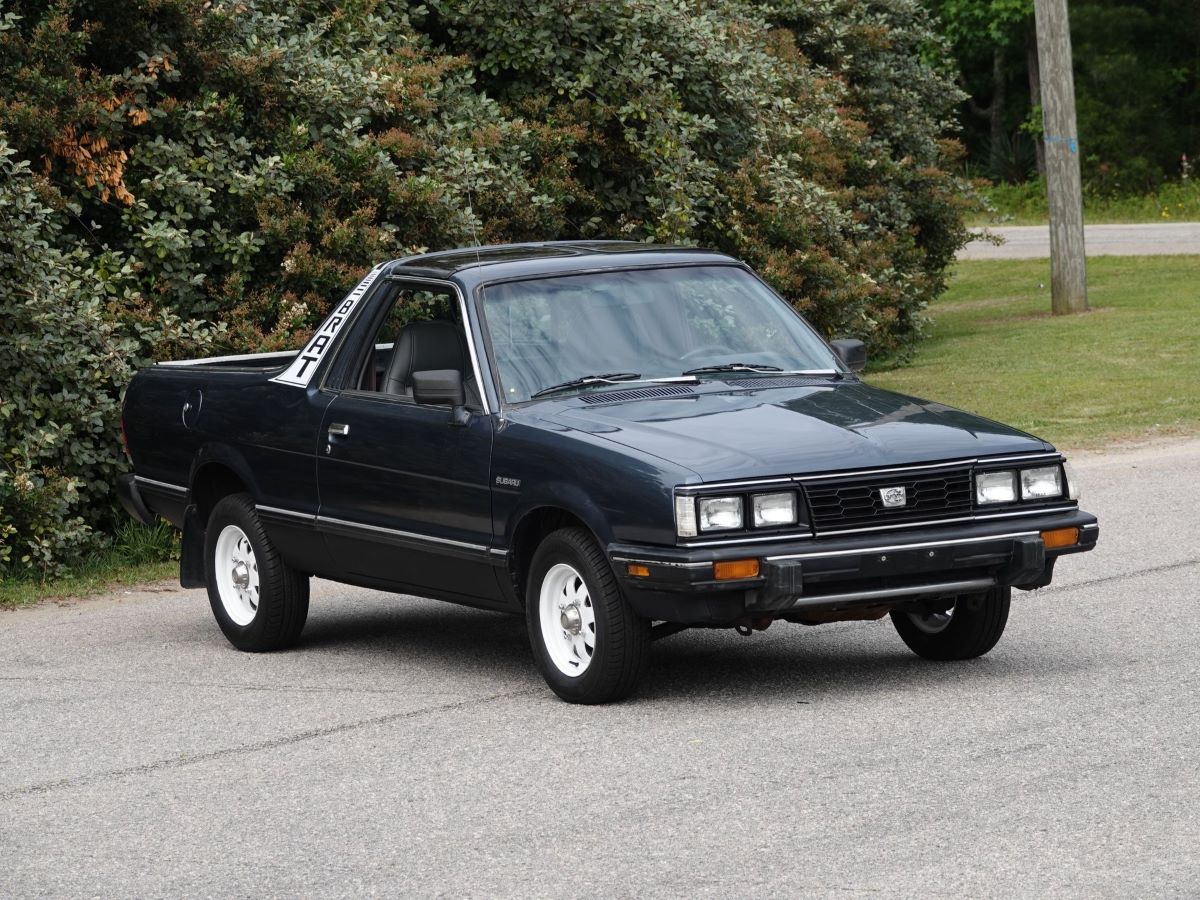
One of these could be Subaru’s first all-electric pickup. The Brat—called the Brumby in Australia—is rumored to return in EV form, possibly built on Toyota’s “EPU” electric pickup concept that debuted at the 2023 Tokyo Motor Show.
Subaru and Toyota recently expanded their partnership, working on a lineup of EVs including successors to the bZ4X and Solterra. While official specs haven’t been released, the new EV truck is expected to maintain a compact, two-seater design reminiscent of the original Brat.
Subaru manufactured the Brat for the U.S. market from 1978 to 1987, branding it a “fun in the sun” vehicle thanks to its “on-demand” 4WD. It came in DL, GL, and turbo GL-10 trims. If the EV revival happens, you can expect it to keep Subaru’s signature AWD system, now likely enhanced with terrain-specific drive modes for mud, snow, sand, and more.
Toyota has already confirmed it will launch an electric pickup in Europe by 2026 as one of three new EVs, though specific details remain scarce.
The EPU concept on which Subaru’s truck might be based measures 5,070 mm in length, 1,910 mm in width, and 1,710 mm in height—significantly larger than the original Brat’s dimensions of 4,424 mm long, 1,620 mm wide, and 1,415 mm tall. To distinguish its EV truck, Subaru could go smaller, possibly reviving the Brat as a two-seat compact model.
Still, its arrival in the U.S. market is uncertain, especially given new auto tariffs introduced by former President Trump. Nonetheless, Subaru intends to introduce at least one more EV in the States.
Earlier this year at the 2025 New York Auto Show, the automaker unveiled the 2026 Trailseeker—its second global EV—offering more cargo space, a taller roofline than the Solterra, and an estimated range of up to 260 miles.

